Thingworld: International Triennial of New Media Art
A collaborative exhibition calling into question human relations with objects

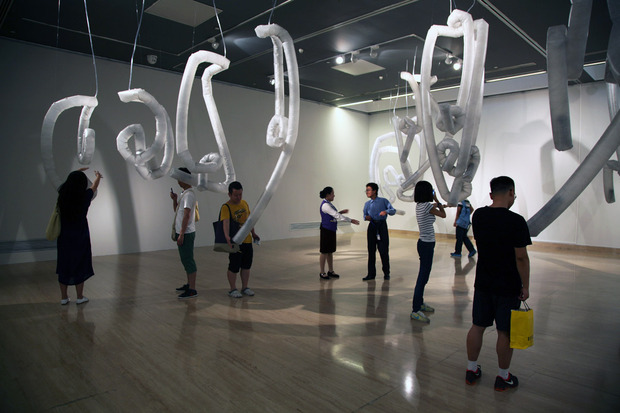
There’s no doubt that China is a fast-growing consumer society, where the accumulation of objects is unprecedented and follows the fast pace of development. A glance at the infamous garbage ring around the capital or the monumental e-wastelands of Southern China are traces of the ephemeral role of vast amounts of refuse, left behind often before having the chance to reveal their purpose.
Thingworld—the third edition of the International Triennial of New Media Art now showing at Beijing’s NAMOC—focuses attention back to a sort of ontological dignity held by things, long remained in the shadows of human subjectivity.
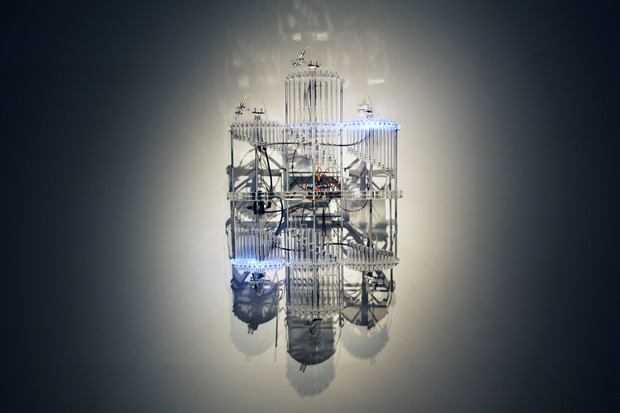
After 2008’s first edition, when the focus was the human desire to transcend the corporal and commencer with the construction of synthetic worlds, and a second edition in 2011 on the relationship between mankind and nature, this third edition puts “things” at the center. The exhibition’s manifesto is “the world is a thingworld, thing is everything.”
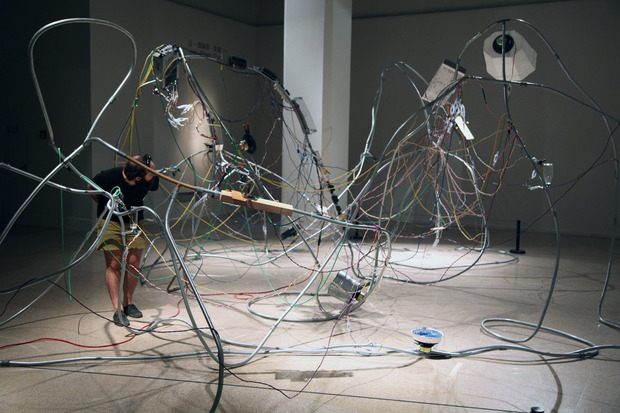
Curated by NAMOC’s director Fan Di’an and internationally recognized media art curator Zhang Ga, professor of Media Art at Tsinghua University and at Parsons School of Design, the exhibition showcases 58 works by 65 artists and collectives from 22 countries. The show is presented in three parts—Monologue, Dialogue and Ensemble—featuring an array of installations that stimulate visitors’ curiosity and a continuous interaction with the audience. Technology, robotics, human and non-human, animate and inanimate are keywords intrinsic to the exhibition.
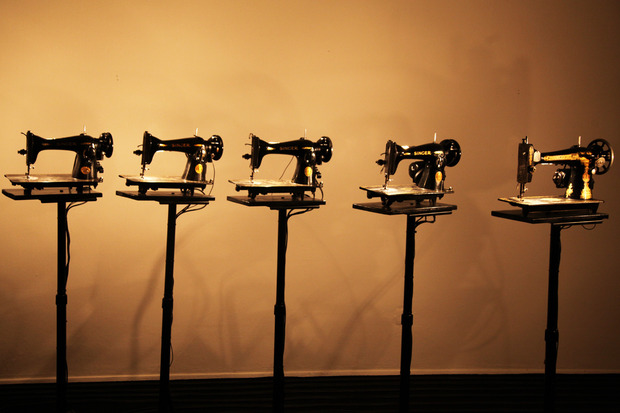
From Martin Messier’s “Sewing Machine Orchestra,” in which an ensemble of old Singers are re-activated as elements of a symphony that echoes the history of these iconic industrial marvels, to Pinar Yoldas’ “An Ecosystem of Excess,” which questions the viewer on what new plastic-eating species could emerge from the Great Pacific Garbage Patch, the whole exhibition is a continuous deconstruction of the dichotomy of organic and manmade.
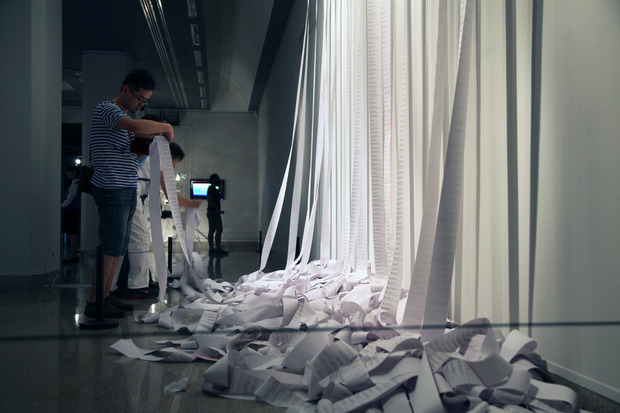
Things, objects and machines become active sources of creativity, like in Julius von Bismarck and Benjamin Maus’ “Perpetual Storytelling Apparatus,” which translates texts into a stream of patent drawings, or Christopher Baker’s “Murmur Study,” whose thermal receipt printers produce an endless waterfall of receipt paper with common emotional utterances sourced from Twitter.
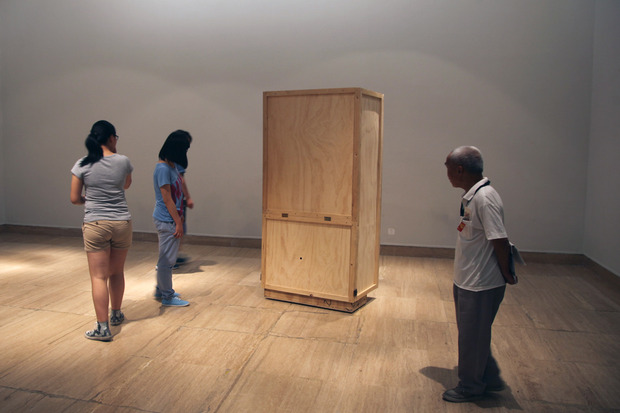
And the traditional patterns of interactivity, as a dialogue between man and machine, are surprisingly subverted in Wade Marynowsky’s “Acconci Robot.” In the piece, an interactive robot enclosed in a shipping crate follows people surreptitiously. Mute and motionless as a viewer approaches, it follows as soon as the audience turns away only to stop again when the audience faces the sly android.
Thingworld, International Triennial of New Media Art, is on at NAMOC until 6 July 2014.
Photos by Dong Shanshan












